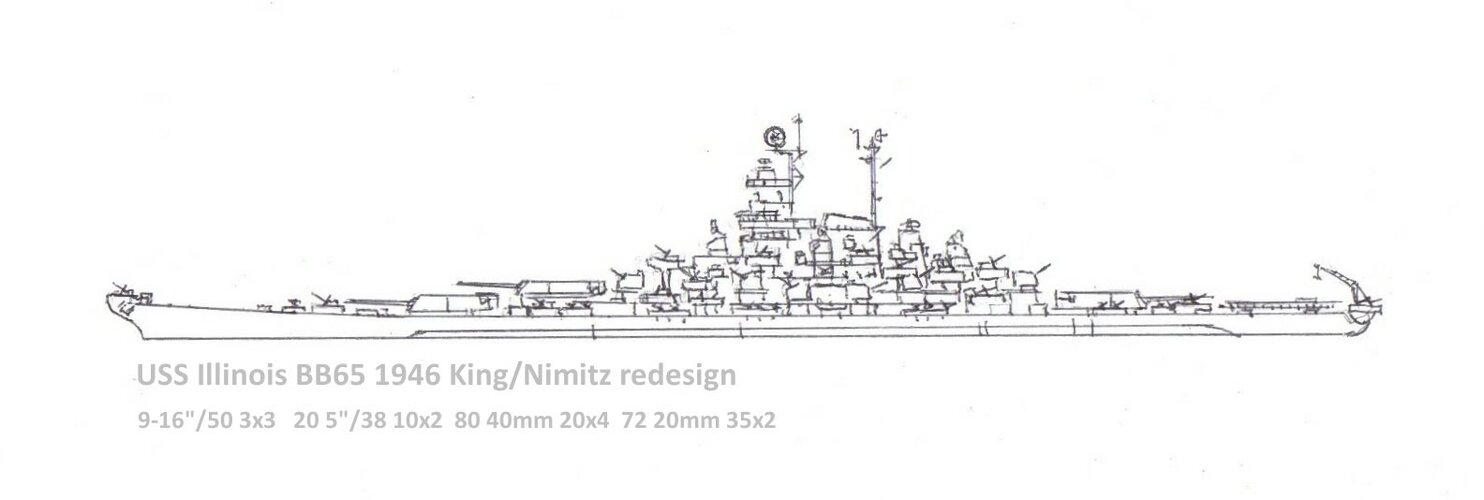Scott Kenny
ACCESS: Above Top Secret
- Joined
- 15 May 2023
- Messages
- 8,641
- Reaction score
- 9,411
I've been looking at various US ship designs and came to an odd question about why the battleships kept all their secondary mounts on the sides and didn't shift a pair of turrets to sit on the centerline like the cruisers did. It would allow at least one extra turret to fire into a broadside (20% increase in broadside weight), and that's assuming that people kept 10 total mounts instead of making it 12 mounts.
I've seen an early design sketch for the SoDaks (on wikipedia) that had this arrangement, and I'm curious why it wasn't pursued.
From wiki:

(This particular version actually only has 8 secondary turrets instead of 10.)
Was it really the increased length of the Citadel that hurt the centerline secondary turrets? Could it have been topweight? I just don't have the education or references to begin to look.
I've seen an early design sketch for the SoDaks (on wikipedia) that had this arrangement, and I'm curious why it wasn't pursued.
From wiki:
(This particular version actually only has 8 secondary turrets instead of 10.)
Was it really the increased length of the Citadel that hurt the centerline secondary turrets? Could it have been topweight? I just don't have the education or references to begin to look.

